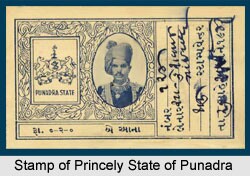Press Release – Recent season of Archaeological explorations at Ramagrama and Tilaurakot- Kapilavastu concludes
Press Release – Recent season of Archaeological explorations at Ramagrama and Tilaurakot-
Kapilavastu concludes
27th November 2019
The Department of Archaeology (Government of Nepal), the Lumbini Development Trust, and
Durham University’s UNESCO Chair on Archaeological Ethics and Practice in Cultural Heritage have
concluded a season of collaborative field activities at Ramagrama and Tilaurakot-Kapilavastu, both
on the Government of Nepal’s list of Tentative UNESCO World Heritage Sites.
The fieldwork at Ramagrama was sponsored by the Oriental Cultural Heritage Sites Protection
Alliance, with the support of UNESCO Kathmandu, has made new archaeological discoveries within
the vicinity of this internationally significant pilgrimage site, believed to be the only original
unopened stupa to house the Gautama Buddha’s relics. While earlier investigations identified a large
monastic complex and brick-edged tank close to the stupa, our new geophysical survey, fieldwalking
and auger core surveys have identified additional traces of heritage below the ground. These include
the presence of brick structures across the old river loop to south, monuments which require further
investigation and protection from unchecked and rapid development close to the site.
The team of national and international experts are guiding the site’s expanded protection by
updating their provisional an Archaeological Risk Map for Ramagrama. This will identify areas where
there is minimal risk to archaeological heritage and those areas that are most threatened by
potential development. The Archaeological Risk Map well help to assist site managers, planners and
government authorities to protect the site’s vulnerable heritage, whilst also allowing for sustainable
development that is of benefit to local communities in the present and the future.
In addition to these activities, and through the generous personal support of Dr Tokushin Kasai, the
team have also undertaken investigations at Tilaurakot-Kapilavastu’s Eastern Stupa, which
traditionally is associated with the Buddha’s horse Kanthaka. During the November season, the team
continued to investigate how the stupa was constructed as well as evaluate the impact of earlier
antiquarian interventions in the nineteenth century.
Our excavations at the stupa indicated that it comprises a series concentric rings of brick, with
rammed brick infills between these rings. A compact lime-cement was laid on the lowest, outermost
ring. The team also identified an old trench cut on the stupa’s south-west slope, as well as damage
to the monument caused by tree roots and animal burrows. The information gained through these
investigations will help develop a strategy for the future conservation and presentation of the
monument for visitors to the site.
The team will return to Tilaurakot-Kapilavastu in January 2020, to continue archaeological
investigations at the Eastern Stupa, and other monuments, with financial support from the
Japanese-Funds-in-Trust-for-UNESCO.
1. Augering at Ramagrama (Durham UNESCO Chair)
2. Geophysical survey to the south of the dried-up river at Ramagrama (Durham UNESCO Chair)
3. Excavations at the Eastern Stupa of Tilaurakot-Kapilavastu (Durham UNESCO Chair)








Comments
Post a Comment